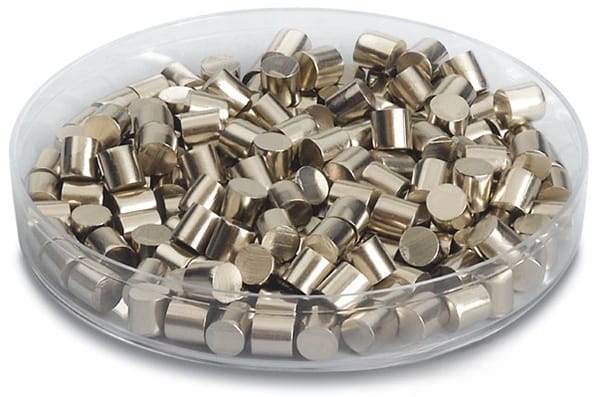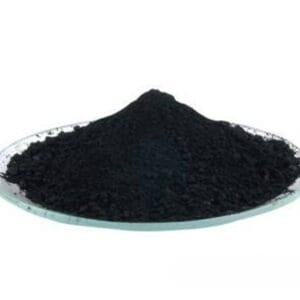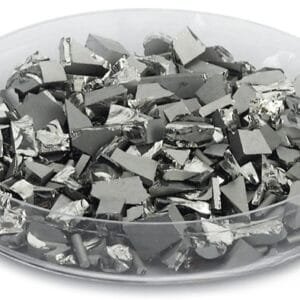Manganese Copper Evaporation Materials Overview
Thin-Film Mat Engineering (TFM) offers high-purity manganese copper evaporation materials, an alloy comprising manganese (Mn) and copper (Cu). These materials are essential for producing high-quality films in various deposition processes. With purity levels up to 99.9995%, our manganese copper evaporation materials are manufactured with rigorous quality assurance to ensure reliable and consistent performance.
Applications of Manganese Copper Evaporation Materials
Manganese copper evaporation materials are utilized in several key applications, including:
- Deposition Processes: Suitable for semiconductor deposition, chemical vapor deposition (CVD), and physical vapor deposition (PVD).
- Optics: Used in wear-resistant coatings, decorative finishes, and display technologies.
Packaging and Handling
To maintain the highest quality, we handle and package our manganese copper evaporation materials with great care. This ensures that the products are protected from damage during storage and transportation, preserving their original condition.
Contact Us
At TFM, we are a leading manufacturer and supplier of high-purity manganese copper evaporation materials. Our offerings include various forms such as tablets, granules, rods, and wires, with customization available upon request. We also provide additional evaporation sources, boats, filaments, crucibles, heaters, and e-beam crucible liners. For current pricing and information on other materials, please contact us directly.


 MSDS File
MSDS File



Reviews
There are no reviews yet.